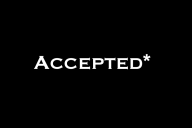You have /5 articles left.
Sign up for a free account or log in.

iStock/aelitta
Tanya Golash-Boza wrote a wonderful essay for Inside Higher Ed in 2016 that discussed eight tips on writing an effective diversity statement. At the University of California, Riverside, this statement is known as the “Statement of Contributions to Diversity” and is described as a “Statement addressing past and/or potential contributions to diversity through teaching, research, professional activity and/or service.” In this essay, I want to provide an additional point of view.
The first step in demystifying a diversity statement is to understand why it matters and why you are being asked to write one. At our university, the diversity statement is just one way to show a commitment to inclusive excellence. It is also your chance as an applicant to show how you can help achieve this goal and be part of our diverse and thriving community. That is, the point of the statement is to show what you will bring to the university in terms of diversity and inclusive excellence.
What does this mean? If you are underrepresented in a particular way, you can, of course, detail it in the statement. But since we cannot legally take into account an individual’s protected characteristics, saying that you are a diverse scholar because of one or any combination of these characteristics will not suffice and, again, that is not the point of the statement. Instead, you, like each and every other applicant, should show, not tell, that you have a commitment to diversity through your research, teaching and service -- the three areas that you are evaluated on throughout your academic career.
Research. What is diversity research? As a former National Center for Institutional Diversity postdoctoral fellow at the University of Michigan, I appreciate and support its approach, which is not limited to particular methodologies, theoretical perspectives or disciplines. Instead, quoting directly from NCID’s “Statement on Diversity Research and Scholarship,” diversity research aims to:
- Inform understanding of historical and contemporary issues of social inequality across societal contexts and life domains (e.g., in education, arts and culture, health and mental health, economic and occupational attainment and mobility, infrastructure and community development).
- Illuminate the challenges and opportunities that arise when individuals from different backgrounds and frames of reference come together in significant societal contexts, such as schools and colleges, neighborhoods and communities, and work teams in organizations.
- Inform our understanding of systems of power and privilege and their interactions with groups historically underrepresented and marginalized based on identities including, but not limited to, race, ethnicity, gender, social/economic class, culture, sexual identity, ability status and religion.
- Highlight the experiences of disenfranchised populations, whose narratives have traditionally been relegated to the outer periphery of intellectual inquiry and academic scholarship, made invisible through epistemologies and research methods that privilege dominant social groups.
- Foreground the knowledge systems, assets and resources, and cultural strengths of members of historically marginalized communities in order to promote empowerment of individuals and groups from these communities.
That is, if any of your research speaks to social inequalities, power and/or interactions between different groups, among other things, you should describe that research as part of your statement. Outline how and why your research speaks to those issues, as well as how your research ties in with other diversity-related scholarship, programs and centers across the campus.
Teaching. Teaching is another aspect to highlight in your diversity statement. This is where you can talk about the courses you teach and your pedagogical approach. Do you teach courses on or about diversity topics? Do you use a wide range of learning activities in the classroom and adjust your teaching to the diverse set of needs of your students? Are you mentoring students who represent diversity in some way in your research or in their own work? Show, again don’t tell, how diversity informs your approach to teaching and mentorship. Be sure to include details of accomplishments and how they relate to your commitment to diversity, rather just than a list of courses that you teach.
Service. For many people, especially those who are in underrepresented groups -- such as racial/ethnic and sexual minorities and women, among others -- commitment to diversity is seen through our service. That is where you describe the kinds of academic, professional and community service you have engaged in, which means showing your commitment beyond a CV-like listing of positions you’ve held or dates of service. You should discuss how and why you are involved in particular types of service and what you’ve accomplished in doing so. Have you mentored underrepresented undergraduates who have applied and gotten into graduate school? Detail that here. Do you serve a leadership position in an organization? Describe what you’ve done in that position and how that reflects your commitment to diversity.
As you describe one, or all three, of the research, teaching and service triad in your statement, be sure to link to opportunities at the place where you are applying. For example, if you’ve previously served as a Mellon Mays mentor, and the university to which you are applying has a Mellon Mays program, be sure to include that connection. The same goes if you work on gender and sexuality studies and the university has a center, department or program in that field -- even if you are not applying to it in particular (for example, if you are applying to a discipline-specific non-gender and sexuality studies department).
Also be aware of how your own life has been shaped by the various academic and social positions you occupy. Are you a first-generation college student, and as such, committed to mentoring such students and being involved in a first-gen program? Does your family background or life experience shape the perspectives that you bring to your research? Here is where you can discuss your own experiences in the statement. But the key is this: you should always discuss those experiences in the context of making them connect to your commitment to diversity in research, teaching and service -- and what you will bring, and how you will contribute, to the broader university.




